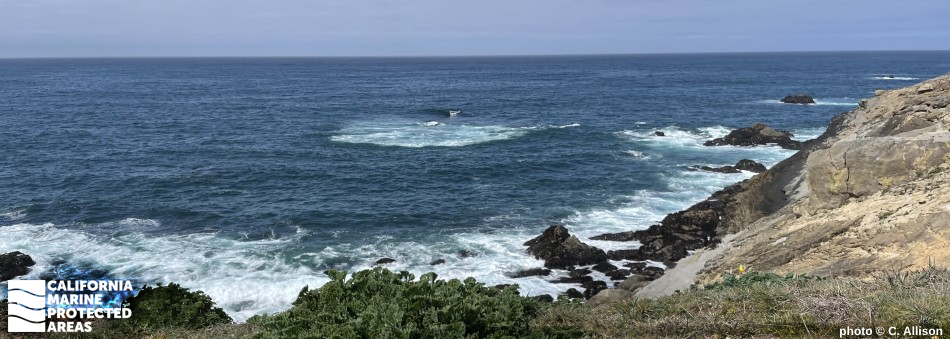
Overview
Stewarts Point State Marine Reserve (SMR) and Stewarts Point State Marine Conservation Area (SMCA) are located along the rugged Sonoma coast, six miles south of Gualala and 80 miles northwest of San Francisco.
The SMR covers a little more than 24 square miles, spanning from the shore out to the three-nautical-mile state water boundary, and reaching depths of nearly 300 feet. With over seven miles of shoreline, this marine protected area (MPA) contains complex rocky and nearshore habitats including coves, shelves, cobbled reefs, kelp forests, tidepools, beaches, and deep sandy seafloor.
The SMCA covers approximately one square mile of predominately nearshore habitats ranging from shore to depths of around 130 feet. With over four miles of shoreline, the SMCA contains complex rocky and sandy beach habitats including coves, shelves, cobbled reefs, kelp forests, and tidepools.
With abundant marine life including a variety of plants, marine mammals, fish, and invertebrates, these MPAs are popular destinations for scuba and free divers, tidepoolers, hikers, beachgoers, and whale watchers. The SMCA is a popular destination for fishermen, as well.
Regulations
Stewarts Point SMR
It is unlawful to injure, damage, take, or possess any living, geological, or cultural marine resource.
California Code of Regulations Title 14, Section 632(b)(34)(opens in new tab)
Stewarts Point SMCA
It is unlawful to injure, damage, take, or possess any living, geological, or cultural marine resource, EXCEPT:
Recreational take of plants (no sea palm), invertebrates, finfish by hook-and-line, surf smelt by beach net, and species listed in CCR T14 §28.80 by hand-held dip net is allowed.
California Code of Regulations Title 14, Section 632(b)(33)
Quick Facts
Stewarts Point SMR
MPA Size: 24.06 square miles
shoreline pan: 7.3 miles
depth range: 0 to 294 feet
habitat composition*:
- rock: 3.62 square miles
- sand/mud: 22.38 square miles
Stewarts Point SMCA
MPA size: 1.19 square miles
shoreline span: 3.9 miles
depth range: 0 to 134 feet
habitat composition*:
- rock: 2.31 square miles
- sand/mud: 0.21 square miles
*habitat calculations are based on three-dimensional area and may exceed the total MPA area listed above.